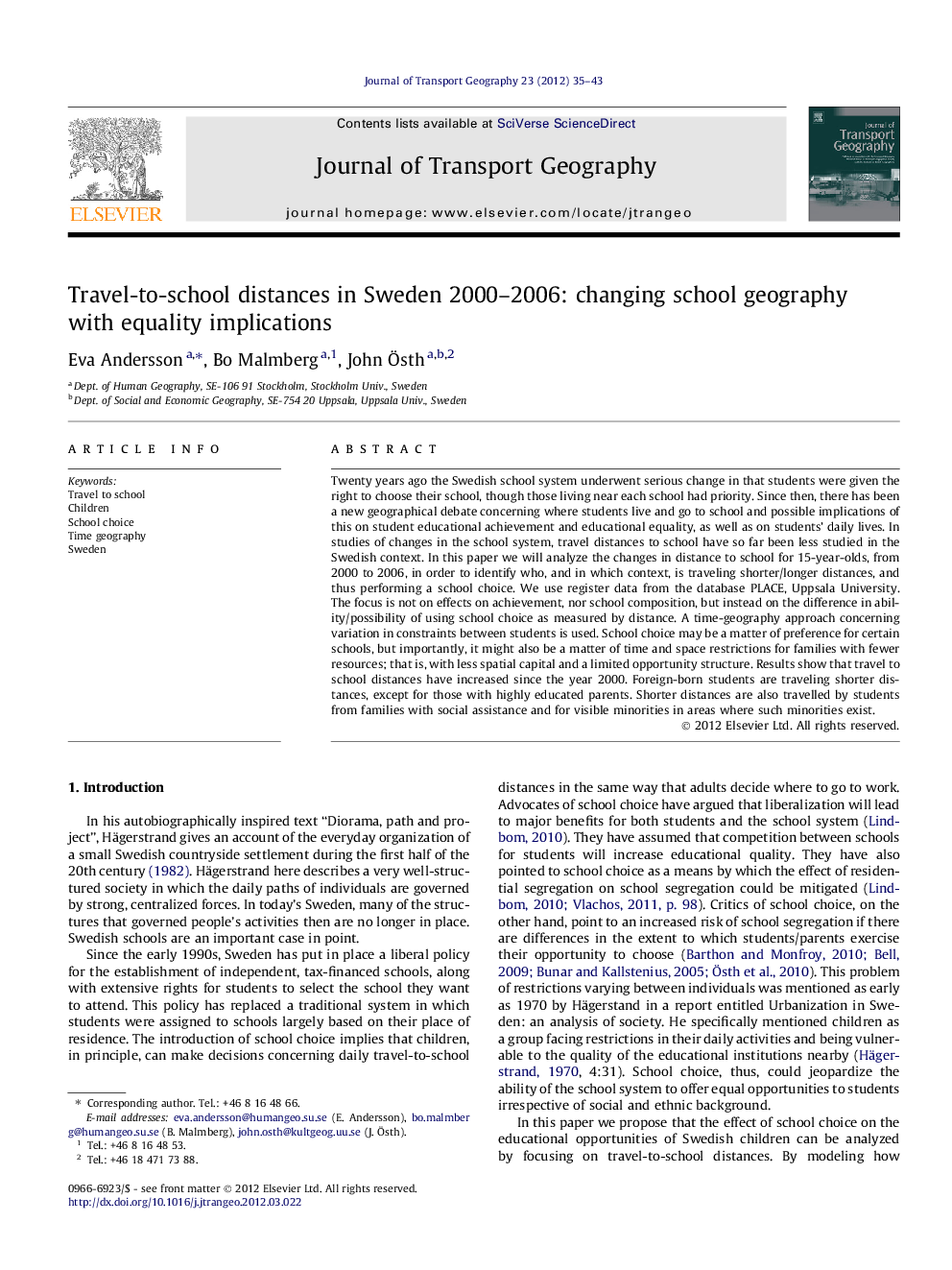| کد مقاله | کد نشریه | سال انتشار | مقاله انگلیسی | نسخه تمام متن |
|---|---|---|---|---|
| 1059260 | 1485444 | 2012 | 9 صفحه PDF | دانلود رایگان |

Twenty years ago the Swedish school system underwent serious change in that students were given the right to choose their school, though those living near each school had priority. Since then, there has been a new geographical debate concerning where students live and go to school and possible implications of this on student educational achievement and educational equality, as well as on students’ daily lives. In studies of changes in the school system, travel distances to school have so far been less studied in the Swedish context. In this paper we will analyze the changes in distance to school for 15-year-olds, from 2000 to 2006, in order to identify who, and in which context, is traveling shorter/longer distances, and thus performing a school choice. We use register data from the database PLACE, Uppsala University. The focus is not on effects on achievement, nor school composition, but instead on the difference in ability/possibility of using school choice as measured by distance. A time-geography approach concerning variation in constraints between students is used. School choice may be a matter of preference for certain schools, but importantly, it might also be a matter of time and space restrictions for families with fewer resources; that is, with less spatial capital and a limited opportunity structure. Results show that travel to school distances have increased since the year 2000. Foreign-born students are traveling shorter distances, except for those with highly educated parents. Shorter distances are also travelled by students from families with social assistance and for visible minorities in areas where such minorities exist.
► Travel-to-school distances for children have increased from 2000 to 2006 in Sweden.
► There are systematic differences in distance to school among children in Sweden.
► A trend is that disadvantaged ethnic and social groups have a lower mobility.
► There are significant area-level effects of social and ethnic composition on mobility.
► Sweden-born students commute longer in areas with visible minorities and foreign born.
Journal: Journal of Transport Geography - Volume 23, July 2012, Pages 35–43